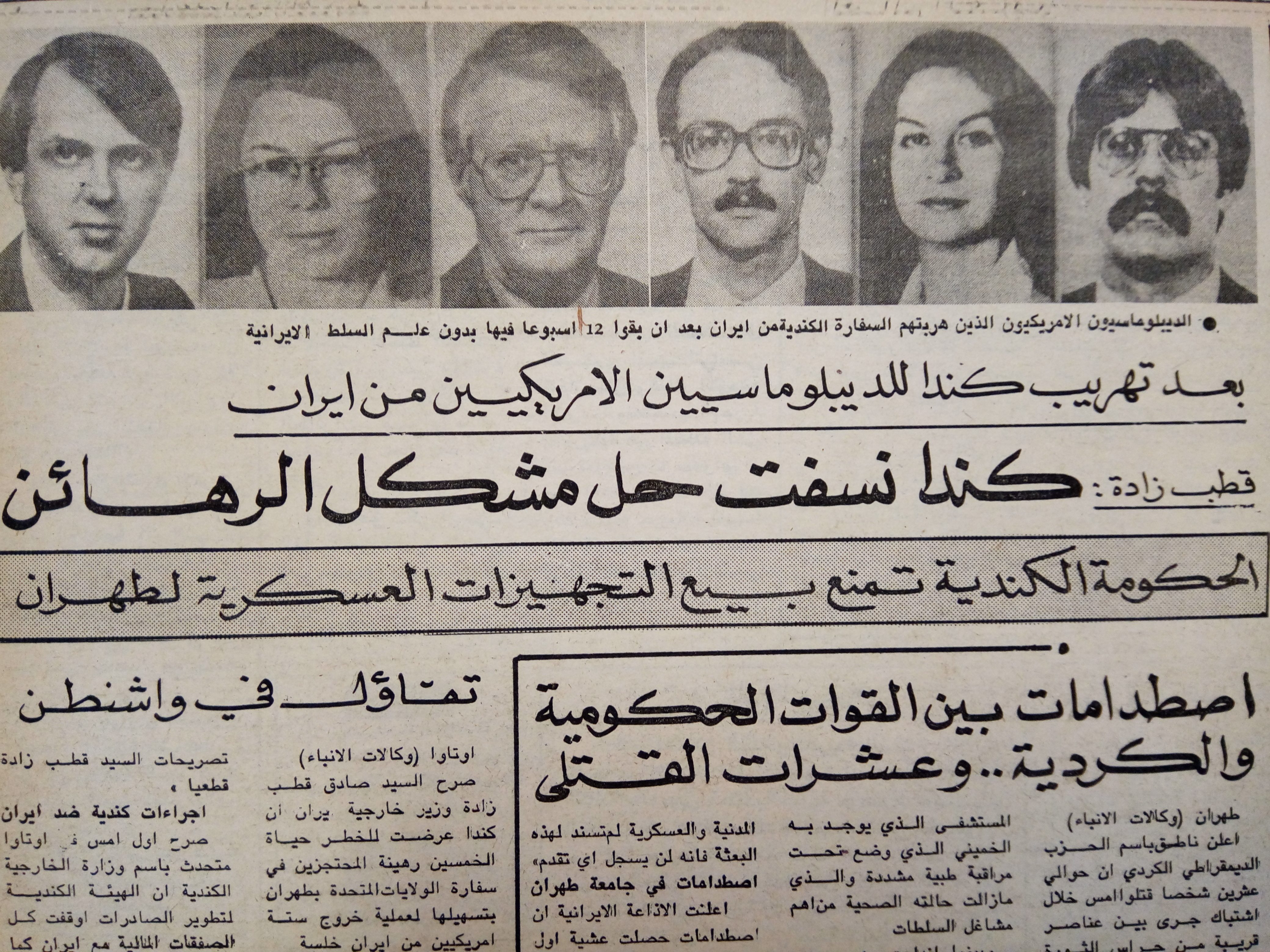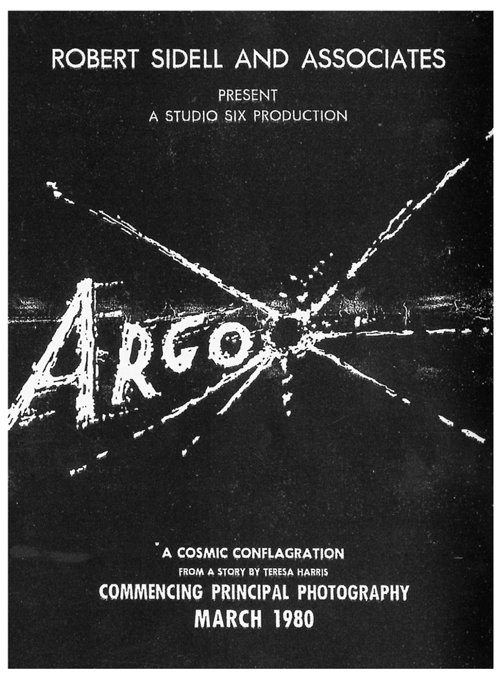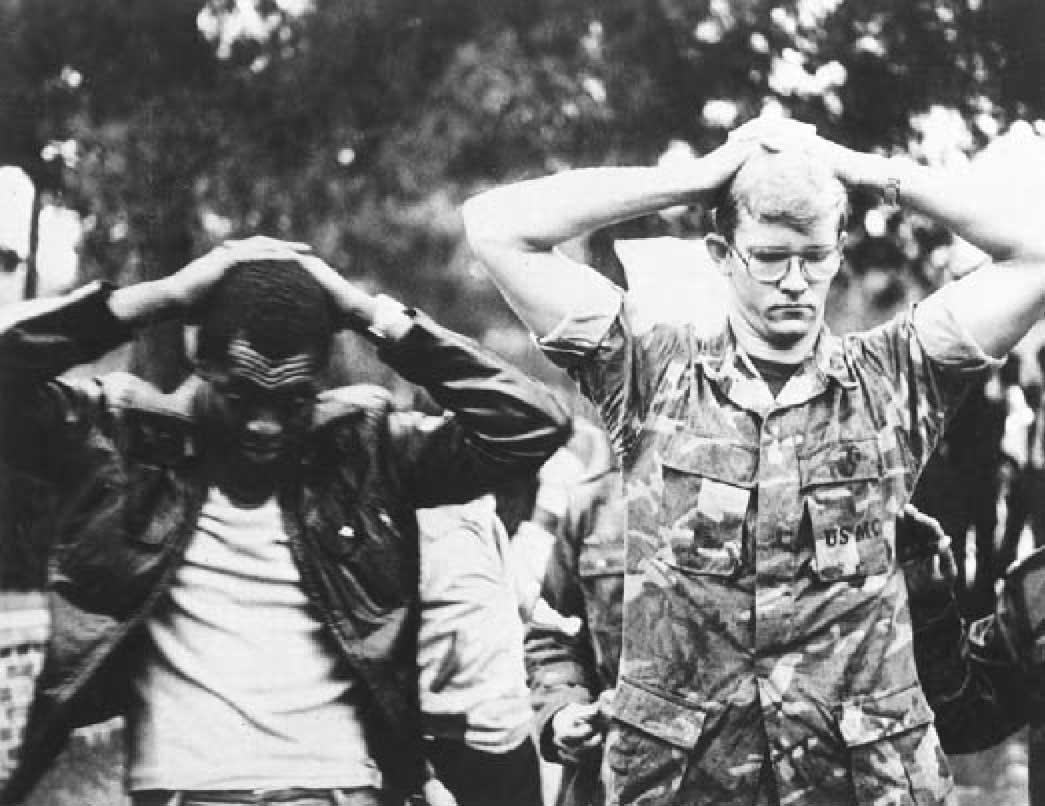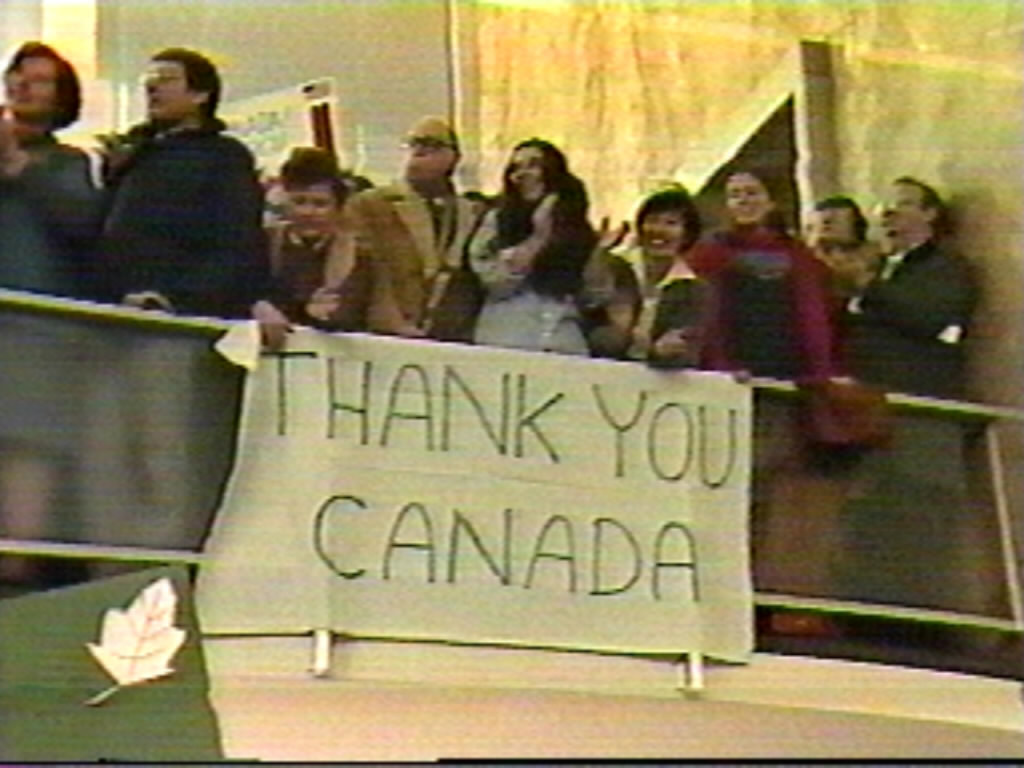The Iranian Revolution, which celebrated its fortieth anniversary on 11 February, brought about dramatic changes to Iran, and Middle Eastern politics. It marked the beginning of an Islamic theocracy unlike any that had been seen elsewhere, and the impact of which still resonates in international politics today.
But did those at the time realize how momentous a change it was?
Someone with first-hand experience is Kathleen Stafford. She, husband Joseph, and four other American diplomats (Robert Anders, Cora Amburn-Lijek, Mark Lijek, and Lee Schatz) were in the country shortly after pro-Khomeni forces declared victory for the revolutionaries. Tensions were high between Iran and the rest of the international community (especially the U.S.) who generally opposed the revolution; and things were soon to get much worse.

(from left to right: Mark Lijek, Cora Lijek, Bob Anders, Joseph Stafford, Kathleen Stafford, and Henry “Lee” Schatz). From Assabah 1980, available at Wikimedia
In November 1979 an international crisis broke out when a group of Iranian students stormed the American embassy in Tehran and took 52 American’s hostage. They demanded the return of former ruler of Iran Shah Mohammed Reza Pahlavi, (who had recently been allowed into the U.S. for cancer treatment) to stand trial for crimes against his countrymen. America did not relent; the Shah died shortly after.
The evasion of the six American’s became known as the Canadian Caper, because of the important role Canadian diplomats, including John Sheardown and Ken Taylor, played in securing their safety. With the help of the CIA’s Tony Mendez the diplomats fled the country in a daring escape.
The event was made famous in the 2012 film Argo where Ben Affleck portrayed Tony Mendez, and Bryan Cranston, Alan Arkin, and John Goodman also played prominent roles, along with Kerry Bishé as Kathleen Stafford.
The six Americans in 1980 took on false identities for a fake sci-fi film (also called Argo), under the pretence of shooting the film in Iran.

Poster for the movie Argo created by the CIA as part of the Canadian Caper, January 1980, available at Wikimedia
Kathleen, who often thinks about those days, especially with the passing of Sheardown, Taylor and recently Mendez, wanted first to emphasise her gratitude towards everyone who had a hand in protecting them:
“The New Zealanders and Dutch who befriended us and supported the Canadian efforts; The people from the British embassy who carted us to all our changing safe havens, some of whom I saw years later in Kuwait; and the Kurdish family who came to our home the day after the takeover (in their pyjamas) to offer help of any kind. We know how very lucky we were”
Kathleen, who is still married to Joseph now works as an artist. I asked her whether they felt safe in Iran in the aftermath of the Revolution, or if they had a sense that something bad was looming for Americans still in the country?
“There had been an intentional turnover of personnel at the embassy after the February takeover. I think by the time Joe and I arrived in early September there were only two or three people who had been at post somewhere in Iran since February of that year. One was Mike Metrinko who had been in Tabriz.
“The State Department was hoping that the clean slate [of new personnel] would show the Iranians that [the U.S.] were having a fresh start. What they call a ‘reset’ nowadays. Within the short time we were there, visitors from Washington who had hoped that the relationship with such a very important and powerful ally could be salvaged, began to see that the secular government did not really have the support of the new major actors, and so the government’s guarantee of our safety was hollow.
“But even with the frigid relations between the U.S. and countries behind the iron curtain, local governments understood that international law meant they were responsible for the safety of the foreign diplomats assigned to their country should riots or attacks on embassies occur.

Two American hostages in Iran hostage crisis, November 1979, available at Wikimedia
“Iranian government officials coming forward, intervening and sending the ‘demonstrators’ home -if there were more serious demonstrations or attempted takeovers- was what was expected, even if there might be tense moments.
“Since it was our first post it was not as though we had honed skills to read between the lines. We were just trying to digest what we could understand on the surface. People were not smiling and welcoming, but not surly or insulting either, in our day to day interactions. Perhaps the ‘reset’ was part of the problem, not enough experienced eyes left.
“You are getting this from the perspective of an artist spouse of a junior Foreign Service officer.
“I had just learned enough Farsi in my 5-month intensive training course to read and write the language, and I had taken the 10-week consular course, so I could work on the visa line. I was fascinated by the architecture and culture in which I was immersed and did not feel threatened. Often in fact welcomed.
“A Kurdish couple befriended us and we all went out to dinner at least once in that short 2-month period. After the takeover they came to the house to offer help. We told them it was best to destroy our phone number since we would inevitably leave, and they might be left in an awkward position as having befriended Americans from the embassy.
“In the two months we were in Iran before the takeover we drove up with our friends, the Lijeks to the Caspian Sea, went out in the countryside one weekend and climbed around looking for ancient pottery shards in the abandoned hide outs of the Assassins north of Tehran, and another weekend drove to Isfahan to see the beautiful blue mosques.
“We almost didn’t make it back for the embassy takeover because we had some car trouble outside Qom. Life was exotic and fascinating.
“We thought the Iranian government would do what was considered the honourable thing, even in ancient times; respect international law, and do what was necessary to protect our embassy.
“It seems very naive in these times when it is a common practice that civilians everywhere are just killed in large numbers to intimidate, but it was not that common an occurrence in those years.

People welcoming six freed hostages back to the United States, 1980, available at Wikimedia
As a result of the hostage crisis the first U.S. backed sanctions against the country came into effect in 1979. The crisis ended with the signing of the Algiers Accords in 1981, when all the captured hostages were allowed to return to the U.S. But American-Iranian relations were soured ever since.
Cover Photo: Recently freed Americans held hostage by Iran disembark Freedom One, taken January 1981, available from Wikimedia
Share this post: on Twitter on Facebook on Google+



0 Comments